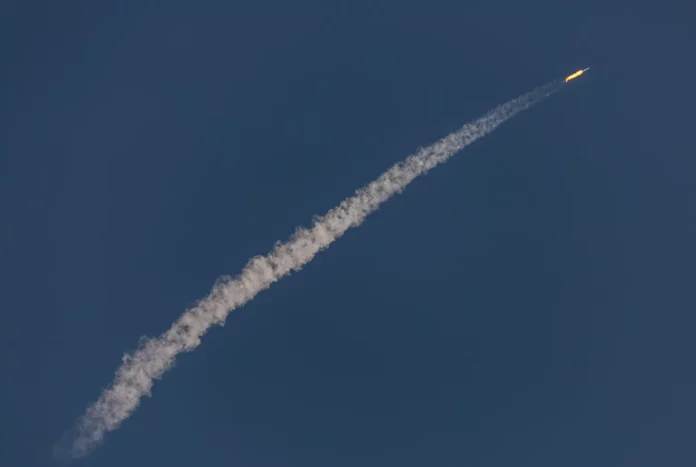Greenhouse gas emissions could affect future satellite launches, new research suggests. As they accumulate, the pollution causes Earth’s upper atmosphere to compress, potentially increasing the risk of satellite collisions in orbit.
It’s another way fossil fuel emissions are having a significant impact on the things people rely on every day, especially as telecommunications companies launch mega-constellations of satellites into orbit. Space is proving to be a finite resource that will need to be better managed as climate change makes it even more limited, the study authors say.
“We’ve really reached the end of the ‘space is big’ era, and I think we need to stop saying that,” says William Parker, a graduate student at the Massachusetts Institute of Technology and lead author of the study, published today in the journal Nature Sustainability. “People don’t realize that the issue of space sustainability is an issue that affects them directly.”
Greenhouse gas emissions trap heat in the lower atmosphere, raising the average global temperature on Earth. Another side effect is that less heat reaches the upper layers of Earth’s atmosphere, and what heat does reach the upper layers of the atmosphere is more easily dissipated into space. This causes the upper atmosphere to cool and contract. Parker says you can think of it as a balloon contracting if you put it in a freezer.
Humans rely on the strong atmosphere to eventually pull down dead satellites and other orbital debris, most of which eventually burns up as it falls through the atmosphere. But as the atmosphere becomes less dense, it reduces the drag on space debris, allowing it to stay in orbit longer—and extending the life span it needs to collide with other objects.
The study found that satellite payloads could be reduced by 50 to 66 percent at altitudes between 200 and 1,000 kilometers above Earth. This would happen in 75 years, under a worst-case scenario with high greenhouse gas emissions due to continued fossil fuel extraction and increasingly energy-intensive lifestyles on Earth. Fortunately, this means there is still time to limit the risks that greenhouse gas emissions could pose to satellites. In the medium scenario, which is considered the most likely scenario, with moderate greenhouse gas emissions, payloads at the same altitudes would be reduced by 24 to 33 percent by the end of the century.
This would still be a significant change for satellite operators to prepare for, especially as low Earth orbit becomes increasingly crowded. Since 1957, humans have launched about 20,650 satellites into space, about 11,100 of which are still operational. That number has skyrocketed in the past decade with the advent of satellite internet. SpaceX’s Starlink satellites alone are reportedly planning to launch 42,000 satellites into orbit.
Collisions are a growing concern due to the accumulation of space debris. In the first half of 2024 alone, SpaceX satellites had to complete 50,000 maneuvers to avoid collisions with other spacecraft and debris. And as greenhouse gas emissions continue to rise, they may have to maneuver around even more obstacles.
Previous studies have looked at how greenhouse gas emissions cause the upper atmosphere to shrink and cool. The study published today is likely the first attempt to quantify the impact of reduced atmospheric density on the capacity of low-Earth orbit, said Petr Šách, a researcher at the Department of Atmospheric Physics at Charles University, who was not involved in the new paper. Parker and his colleagues used atmospheric models to estimate how many satellites could safely operate in orbit under different greenhouse gas emission scenarios. Šách notes that there are other factors that could cause short-term density anomalies, especially given how little scientists understand about how gravitational waves will respond to atmospheric changes caused by greenhouse gas emissions.
Parker wants to make sure we can avoid a tipping point where all the traffic in low-Earth orbit triggers cascading collisions that could lead to people losing access to parts of space, like a highway accident blocking a road. People now rely on satellites for everything from GPS to weather forecasts.
“We all want to make sure that future generations can benefit from the benefits that we get from space,” Parker says. “I think the point of this article was to bring a little bit of public awareness… to how space sustainability affects them. And to make sure that people in the satellite community are aware that this resource is finite and changing.”









